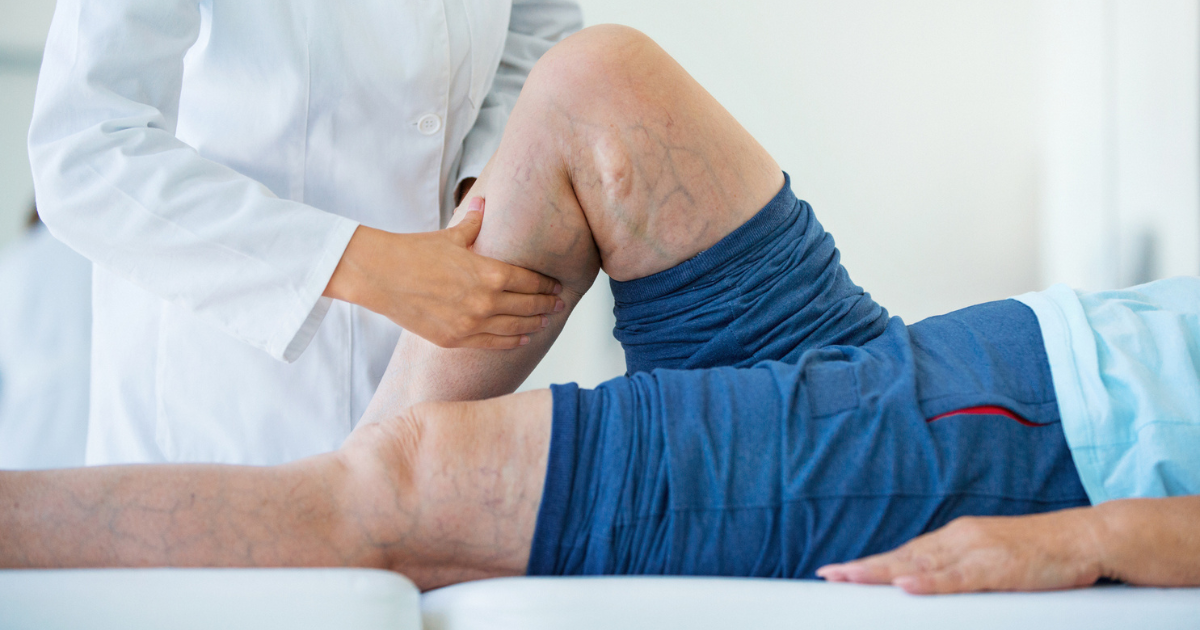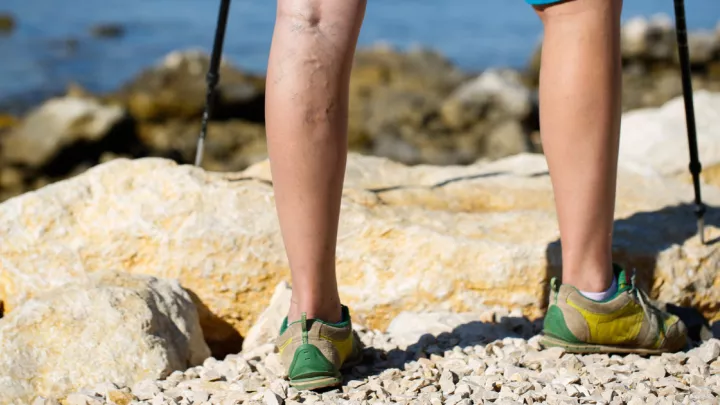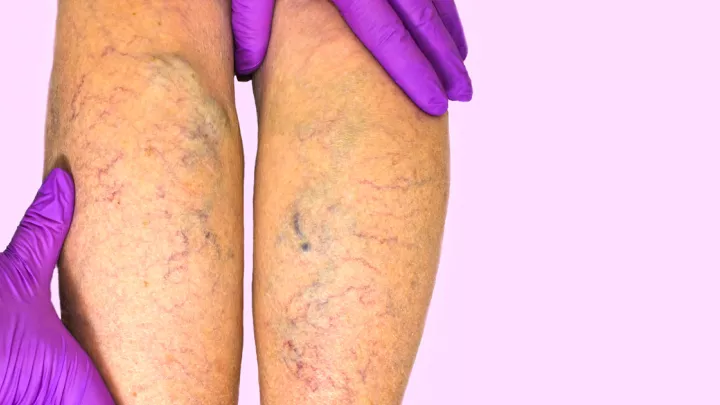Can varicose veins be dangerous?

Varicose veins are abnormal branches from larger, more typical veins. Even if you don’t have one yourself, chances are you’ve seen such a swollen blue and purple bulge in someone else. While they may look unusual, varicose veins are relatively common and occur in approximately 20% to 30% of people. Another 20% of people will have reticular veins. All told, nearly 50% of the population over 70 will have some manifestation of abnormal veins.
“Essentially, every vein has one-way valves in it, designed to transport blood to the heart and not let it back,” says vascular surgeon Jonathan Thompson, MD. “In most patients with varicose veins, those valves don’t close as quickly or at all, allowing blood to travel backward and go out into these detour veins.” Over time, this process can create large and potentially painful varicose veins.
Risk factors for developing varicose veins
“Family history is probably the most significant risk factor,” says Dr. Thompson. “So, if you have family members with varicose veins, your likelihood of developing them is quite high.” Additional risk factors that increase your chances of developing varicose veins include:
- A history of blood clots.
- Pregnancy.
- Jobs that require prolonged standing in a single spot.
Additionally, your chances of having varicose veins increase with age. “At 40 years old, your risk of varicose veins is approximately 10% to 15%, and increases to 30% after age 70,” says Dr. Thompson.
Symptoms of varicose veins
Generally, symptoms of varicose veins include:
- Pain over the varicosities (the varicose veins), especially at night.
- Heaviness.
- Fatigue.
- Swelling.
- Darkening or inflammation of the skin.
In rare cases, some patients may also experience bleeding or clotting, which can be painful. Likewise, while uncommon, some potential complications may develop because of varicose veins. Such complications can include superficial thrombophlebitis (closing of the veins) and ulceration. “Still, there’s no significant association with varicose veins and an increased risk for blood clots in your deep-vein system over the general population,” says Dr. Thompson.
Dangers of varicose veins
While varicose veins are common and most symptoms aren’t life-threatening, it’s a serious condition that presents some real potential dangers. “If left untreated, over time, the excess pressure in your legs can develop some of the pigmentation changes, and in rare instances, could lead to wounds or ulcerations, which become very difficult to treat,” says Dr. Thompson. The chances of this occurring are less than 5%, but if you have more severe symptoms, like your skin darkening or discoloration of your feet, leaving your varicose veins untreated could become problematic in the future.
Treatments for varicose veins
“We always start with quality, well-fitted medical-grade compressions,” says Dr. Thompson. “Usually, we begin with knee-high compression stockings, which you’ll need to wear at all times during the day, but not at night.” Although some patients don’t want to wear these compressions because they’re difficult to put on and uncomfortable if you’re not used to them, they’re vital to treating varicose veins. “It’s a treatment, and patients need to think of it like taking a medication,” says Dr. Thompson.
Regular exercise is also essential because it pumps blood into the calf and thigh muscles. Walking, jogging, biking and swimming will help your blood flow through the correct pathways and maintain good veinous health. “We also recommend patients elevate their legs above their heart one or two times a day,” says Dr. Thompson. “This elevation will drain the excess blood from your legs and send it back to your heart, giving those veins a rest.”
If patients still experience symptoms after these initial treatments or they develop more significant complications, such as bleeding or ulcerations, there are surgical therapies. Fortunately, most of these surgeries are minimally invasive.
Preventing varicose veins
“Considering that 30% to 50% of the population has some element of veinous reflux, wearing compressions, particularly if you have a family history of varicose veins or have a job that requires prolonged standing, is critical,” says Dr. Thompson. “Regular exercise is also key to prevention, as it keeps those calf muscles pumping regularly and the blood flowing in the correct direction.”
Treating varicose veins
“The biggest myth about varicose veins is that they’re just cosmetic,” says Dr. Thompson. “This idea is a fallacy, as varicose veins are abnormal and cause the symptoms we previously discussed.” Because many people believe this misconception, they don’t seek treatment, believing that even if varicose veins look bad, they’re not meaningfully affecting them.
“Still, in patients with symptoms, the heaviness, fatigue, swelling and pain, we recommend treatment,” says Dr. Thompson. “Luckily, master vascular surgeons, like those at the Nebraska Medical Center, are great at evaluating these patients and understanding the serious conditions that could manifest in varicose veins.”







